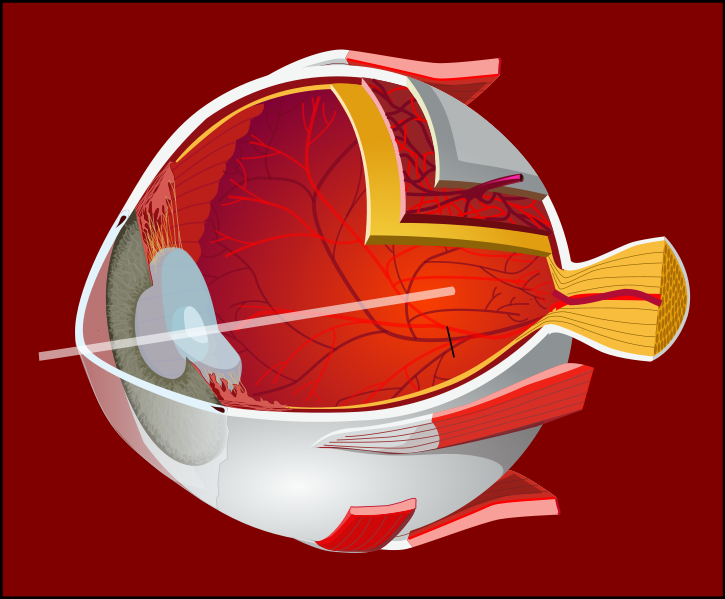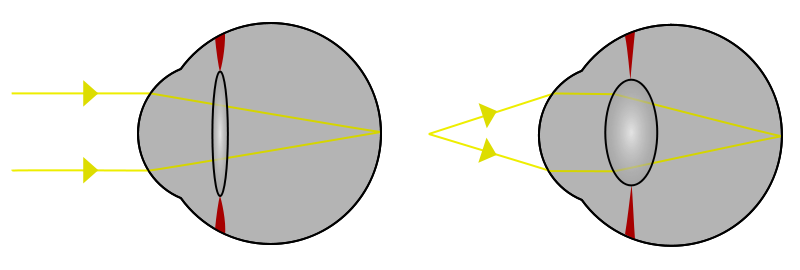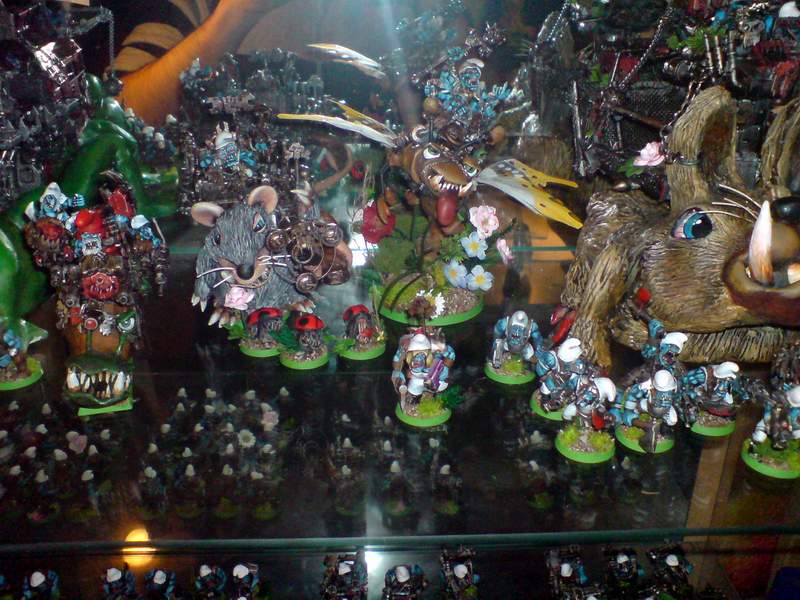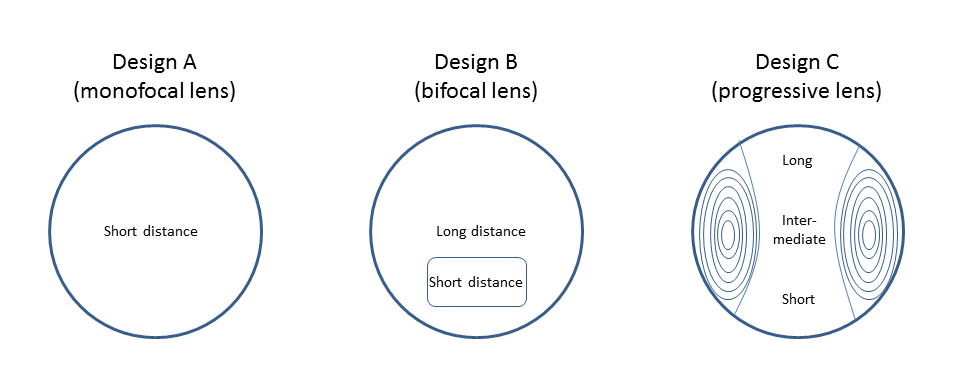HOBBY: 40K and Ergonomics – Part 2

“My eyes! The goggles do nothing!!!” -Rainier Wolfecastle
Welcome to the second and final guest article on 40K and ergonomics where we are going to dabble in human vision. My name is Parcival and I am your host, your fellow Swiss dude and Sanguinius addict from across the Big Pond. Once again we are pampered with pictures of Ukrath Chamondah’s finest models as a diversion from my successful attempt to write worse articles than Brent’s. If you want, you can skip this entire article and read the articles on Wikipedia titled “Accommodation (Eye)” and “Presbyopia” instead. However, if you are not that much into brainy language, bear with me for a little longer.
How to see a moving Gretchin
Every day, our eyes are doing amazing things and one of them is giving us crisp and clear vision of an object, no matter if that object is rather close or far away. You can do a very simple experiment by holding your hand in front of your face and trying to focus with your eyes on its surface. Once you have a clear image, move your hand away and look at the wall furthest from you. It will take a short time for your eyes to adjust, but soon you have clear and crisp view of the wall, too. This mechanism, which allows us to get a clear view of objects near and far, is called Accommodation. Our eyes achieve this change of focus by changing the form of the lens as shown in the following picture:
Papa Nurgle is waiting for you at age 45
Focusing on objects at various distances is a great thing, but it isn’t meant to last. The older we get, the more we lose the ability to change the form of our lenses and the less we are able to change our focus. If you look up scientific literature, you can find entire tables linking the ability to change focus to the age of a person. Generally speaking, we are absolutely great as kids, but this ability starts to fade when we hit the late twenties. Fortunately, the symptoms are originally very mild so we don’t even notice, but as a rule of thumb they get bad enough to be noticed around the age of 45. This is why people suddenly wear glasses at that age who never wore any during their entire lifetime. The loss of this ability to change focus is called presbyopia and while that may sound like a dangerous disease, it is a completely normal process that occurs in every human being. Still, losing the ability to change focus is pretty annoying as you only get a clear view of objects if they are all placed exactly at a specific distance. This has many consequences for your 40K hobby as you will find it harder to see the miniature you paint or the other player’s dice rolls. As a consequence, we have to find a solution that allows people beyond 45 to see better and enjoy their 40K hobby just the same as when they were younger.
The Emperor Protects
The usual remedy against the loss of changing focus is an optician’s prescription of glasses that restore proper focus again. However, in order to correctly prescribe a fitting pair of glasses, the optician needs to know what distance they are being used for. Opticians generally differentiate between three distances:
-Short distance, also called reading distance, is the area where you comfortably hold your Codex and read its text without much effort.
-Intermediate distance is the area more or less at your arm’s length, for example when you are setting up your miniatures on the gaming table below. Proper vision at this distance is also important for all you guys with computer jobs that have you stare at screens for hours.
-Long distance simply is everything that goes beyond intermediate distance. I already mentioned looking at the other player’s dice rolls at the other end of the table, but driving your car is another good example.
When you are shopping at your optician’s store for a fitting set of glasses, you basically have to choose between two types of (crystalline) lenses: you can either have a lens that perfectly restores vision for one distance (e.g. short distance) or you can have a lens that restores less than perfect vision for two or all three of the distances listed above. In the next picture you get to see three possible designs that fall into these two types of lenses:
Design A is called monofocal because it will give you one focal point. It will give you a set of glasses where you can use the full surface of the lens to look at an object at a given distance. For example, a set of glasses optimized for short distances is perfect when you are lying on the couch reading your Codex or sitting at your painting table working on miniatures. However, as soon as you get up and start moving around the house again, these glasses won’t be good anymore as you probably don’t want to look at objects at short distances only.
Design B is called bifocal because it gives you two focal points. In the example above we have a lens where you can use most of its surface to look at objects far away, but there is a smaller window at the bottom that allows you to look at objects at close range instead. My grandmother used to have a pair of these; when she was moving and working around the house, she looked through the far part, but when she sat down to read the newspaper, she looked through the near part. Now this design allows a lot more freedom of movement, but some people find it annoying and disruptive to have a window in their field of vision that works differently than the rest.
Design C is called progressive because the focal point seamlessly changes in the channel at the center. If you look through the lower part of the lens, you can read your Codex and as you move your eyes up, the focal point gradually changes until you can perfectly read the other player’s dice rolls at the other end of the table. In other words, this type of lens will give you a set of glasses that can be used in virtually every situation, on the couch with the Codex as much as at the gaming table. However, while this sounds awesome so far, this design also has some severe drawbacks. On the one hand, people need to get used to moving their heads and eyes until they have found the correct angle to look at an object. In some cases, this can lead to intense feeling nausea. On the other hand, progressive lenses always have blurry areas to the left and to the right, so they restrict your freedom even further. (Somebody with more brains than me was able to prove that it is physically impossible to create a progressive lens without blurry areas.)
Go and see a Techmarine
All in all, I recommend 40K enthusiasts to get several glasses. All the endless hours we spend painting or reading Horus Heresy novels involve objects at a static distance, so it’s a good idea to have glasses with monofocal lenses (Design A) so you can have your eyes wander across pages with almost no restrictions. However, when you go to the gaming table, the social interactions and the game itself require you to constantly adapt to various viewing distances. In that context I recommend glasses with progressive lenses (Design C) if you are comfortable wearing those. Research hints towards us finding it easier to adapt to progressive lenses the earlier we start wearing them. (However, other research also suggests that we can delay the effects of presbyopia if we wait a little before we get our first set of glasses.) When we are around 45 years of age and our presbyopia is still mild, progressive lenses are more comfortable to wear as the negative side effects are milder, too. If we wait until (let’s say) 55 years of age and feel the urgent need for glasses, we may find it very difficult to adapt to a completely different way of viewing things all of a sudden. In other words, it is good to go and see an optician around 45 for a checkup. You can tell a good optician from a bad one when he/she doesn’t just sell glasses to you, but is trying to get to know you, your activities, and the viewing distances involved. Describe to them what you do when you are pursuing the hobby because it will help them find out what distances are the most important for you. A good optician will try to come up with a unique pair of lenses for you– after all you are a unique person.
So this is it folks, I will keep my mouth shut again. However, what are your experiences with glasses and 40K? Is there a design you are especially comfortable with? Are you even sporting a paint station with magnifying lenses every Techmarine (or Big Mek, for the matter) would be proud of?












